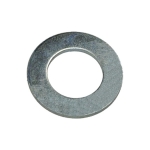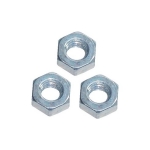Licensed to Kill? Are your vehicles road-worthy and legal?
Posted on 26/03/19
Every company vehicle has to comply with vehicle safety regulations, and of course have paid road tax (where applicable) and have valid insurance cover.
Vehicle safety legislation and guidelines include the Road Traffic Act 1991, the Working Time Directive, and, of course, the Highway Code.

You may also need an Operator’s Licence if you are running certain vehicles to carry out your business. You will need a licence to carry goods in a lorry, van or other vehicle with either:
a gross plated weight (the maximum weight that the vehicle can have at any one time) of over 3,500 kilograms (kg)
an unladen weight of more than 1,525 kg (where there is no plated weight).
There are 3 different types of licence - what you need depends on the work you do.
You must also make sure that any drivers you use or employ have the correct licence and training. All vehicles that you use should be correctly taxed and kept safe and in good condition at all times.
Some goods vehicles don’t need an operator’s licence – check if you do on the government website.
Employers and duty holders must make sure that vehicles used in the workplace are safe, driven safely, and regularly maintained, repaired and inspected.
By law, every employer must make sure that work equipment (which includes vehicles) is suitable for its purpose taking into account of working conditions and assess the H&S risks of using the chosen work equipment.
The responsibility for the safety of the vehicle lies not only with the owner (company or operator), but also with the driver.
A snapshot of some of the rules and checks that apply include:
As an employer / operator, you must:
monitor your drivers’ working time and make sure they don’t go over the limit, recording working time and keeping the records for at least 2 years
carry out safety inspections before you use a vehicle for the first time - even if you’re just leasing, hiring or borrowing the vehicle
make sure there are regular safety inspections
give drivers clear written instructions of their responsibilities so they understand what they should do
have a system to ensure that non-roadworthy vehicles are taken out of service
ensure safety inspections are carried out by trained inspectors with a good knowledge of the appropriate Driver and Vehicle Standards Agency (DVSA) inspection manuals.
As an employee / driver you also have responsibilities, and you must:
ensure your vehicle is safe to drive before setting off on a journey by carrying out a walkaround check of the vehicle before your journey and check the lights, tyres, wheel fixings, bodywork, trailer coupling, load and other equipment
report any defects in writing to whoever’s in charge of sorting out vehicle defects in your organisation. Reports should include the vehicle registration or identification mark, date of inspection, details of the defects, and your name.
Drivers could be stopped at anytime by either Traffic Police or VOSA (DVSA) for vehicle inspections which could result in warnings or the vehicle being taken off the road immediately.
Clearly any violation of VOSA standards causing a vehicle to be taken off the road could impact on both our customers and our day-to-day business, so for the safety of our drivers, other road users, and to keep our business running, it is imperative that we ensure that our vehicles are as safe as possible.
Each morning here at Lamberts our drivers perform a walk around check of their vehicle and report any defects on a Vehicle Log Sheet. Any major issues are reported to me, the Operations Manager, and I will then deal with the issue as necessary.
If a vehicle is deemed unsafe to drive, then the vehicle will be taken off the road and not used until the issue is rectified. Any smaller defects are booked in to be fixed with relevant repairers, eg cracked windscreen. This is all done before the vehicle starts out on its daily journey.
Our regular preventive maintenance inspections are based either on periodic intervals or mileage, and the planned maintenance (such as servicing and MOT certification) helps to prevent failures during use.
It’s not just the vehicle that needs to be safe, but also the load that it carries. Employers and duty holders must make sure that loads are safely anchored to the vehicle and that the vehicle is strong enough to take the strain. Safety of Loads on Vehicles (Department for Transport) gives detailed guidance about vehicles carrying loads on public roads, much of which is relevant to securing loads to workplace vehicles.
But safety doesn’t stop there! Once out on the road there are specific speed limits that apply to different vehicle categories. Our drivers ensure that they demonstrate safe and efficient driving skills and any other good road safety habits at all times to create the safest environment for the driver, the passengers, and all other road users.
So you can rest assured that your Lamberts’ delivery is in safe hands – we keep our vehicles running to keep your business running.
And finally, don’t forget we offer FREE delivery on all orders over £35!
Cindy Dunnell
Operations Manager
Please note this is NOT a full nor a definitive list of all the regulations required to keep a vehicle legal and safe. Check VOSA and government publications to ensure your vehicles meet the standards required.







